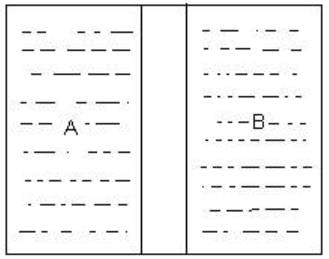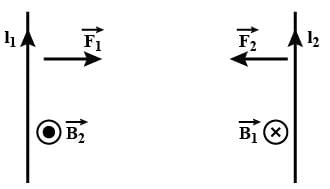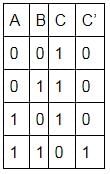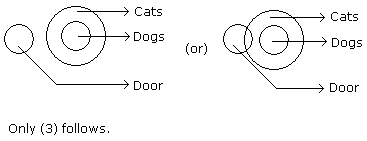Indian Air Force Agniveer Science & Other than Science Mock Test - 10 - Indian Air Force Agniveer Vayu MCQ
30 Questions MCQ Test Indian Air Force Agniveer Vayu Group X Mock Test Series 2025 - Indian Air Force Agniveer Science & Other than Science Mock Test - 10
We can derive Newtons
The property by virtue of which the free surface of a liquid at rest behaves like an elastic stretched membrane tending to contract so as to occupy minimum surface area is known as
Which wall would allow the flow of thermal energy between systems A and B to achieve thermal equilibrium?


Resonance is an example of [1999]
Which of the following statements is/are true about the principle of Van de Graaff generator?
In a meter bridge experiment a balance point is obtained at a distance of 60 cm from the left end when unknown resistance R is in a left gap and 8 ohms resistor is connected in the right gap. When the position of R and 8 ohm resistor is interchanged the balance point will be at distance of
In two current carrying conductors parallel currents________, anti parallel currents_________ .
Photoelectric effect is
The density of nuclear matter is:
The constituents of atomic nuclei are believedto be [1991]
The truth table given below is for a gate with A and B as inputs and C as output. Which of the gates will obey this truth table?
What is the sign of the sec θ and cosec θ in second quadrant respectively?
What is the degree measure of the angle A = -15π/2?
The solution of the quadratic equation : 2x2 – 4x + 3 = 0
How many terms of the G.P. 4 + 16 + 64 + … will make the sum 5460?
If then the value of k is:
The area bounded by the curves y2 = 4x and y = x is equal to
8 coins are tossed at a time. The probability of getting atleast 6 heads up is
A batsman scores runs in 10 innings as 38,70,48,34,42,55,63,46,54 and 44 , then the mean score is
In these days of inflation / a ten rupee's note will not buy you / even an ordinary meal. / No error.
The active voice sentence "The teacher will grade the papers tomorrow" can be changed to passive voice as:
Direction: Read the following passage carefully and answer the question that follows.
After a worrying pre-monsoon phase between March and May, when rainfall was scarce, the current robust season in most parts of coastal, western and central India augurs well for the entire economy. Aided apparently by beneficial conditions in the Indian Ocean, very heavy rainfall has been recorded, notably in Maharashtra, Gujarat, Rajasthan, the northeastern States, Karnataka, the Konkan coast, hilly districts of Kerala and Tamil Nadu. This pattern may extend into Chhattisgarh, Odisha, Bengal and other eastern regions. A normal Indian Summer Monsoon is bountiful overall, but as last year’s flooding in Kerala, and the Chennai catastrophe of 2015 showed, there can be a terrible cost in terms of lives and property lost, and people displaced. Distressing scenes of death and destruction are again being witnessed. Even in a rain-shadow region such as Coimbatore in Tamil Nadu, the collapse of a railway parcel office after a downpour has led to avoidable deaths. What this underscores is the need to prepare for the rainy season with harvesting measures, as advocated by the Centre’s Jal Shakti Abhiyan, and a safety audit of structures, particularly those used by the official agencies. In drafting their management plans, States must be aware of the scientific consensus: that future rain spells may be short, often unpredictable and very heavy influenced by a changing climate. They need to invest in reliable infrastructure to mitigate the impact of flooding and avert disasters that could have global consequences in an integrated economy.
The long-term trends for flood impact in India have been one of declining loss of lives and cattle since the decadal high of 1971-80, but rising absolute economic losses, though not as a share of GDP. It is important, therefore, to increase resilience through planning, especially in cities and towns which are expanding steadily. Orderly urban development is critical for sustainability, as the mega flood disasters in Mumbai and Chennai witnessed in this century make clear. It is worth pointing out that the response of State governments to the imperative is tardy and even indifferent. They are hesitant to act against encroachment of lake catchments, river courses and floodplains. The extreme distress in Chennai, for instance, has not persuaded the State government against allowing structures such as a police station being constructed on a lake bed, after reclassification of land. Granting such permissions is an abdication of responsibility and a violation of National Disaster Management Authority Guidelines to prevent urban flooding. As a nation that is set to become the most populous in less than a decade, India must address its crippling cycles of drought and flood with redoubled vigour. Scientific hydrology, coupled with the traditional wisdom of saving water through large innovative structures, will mitigate floods and help communities prosper.
Q. Which among the following is correct regarding the impact of flood in India over the years starting from 1970s?
Hemant walked 40 metres facing towards North. From there he walked 50 metres after turning to his left. After this he walked 40 metres after turning to his left. How far and in what direction is he now from his starting point?
Three buckets contains balloons filled with water. First bucket contains 243 balloons. Second contains 304 balloons and last bucket contains 127 balloons. Find the largest number of balloons that can be given equally to the children such that 3, 4 and 7 balloons are left in first, second and third bucket respectively?
Directions to Solve
In each of the following questions, five words have been given out of which four are alike in some manner, while the fifth one is different. Choose the word which is different from the rest.
Question -
Choose the word which is different from the rest.
Directions to Solve
In each of the following questions two statements are given. Which are followed by four conclusions (1), (2), (3) and (4). Choose the conclusions which logically follow from the given statements.
Question -
Statements: No door is dog. All the dogs are cats.
Conclusions:
- No door is cat.
- No cat is door.
- Some cats are dogs.
- All the cats are dogs.
If A + B means A is the father of B; A - B means A is the brother B; A % B means A is the wife of B and A x B means A is the mother of B, which of the following shows that M is the maternal grandmother of T?
Potassium Permanganate is used for purifying drinking water, because -
What is the objective of the Memorandum of Understanding (MoU) signed between the Ministry of Defence (MoD) and the Food Safety & Standards Authority of India (FSSAI)?
Pointing to a photograph. Bajpai said, "He is the son of the only daughter of the father of my brother." How Bajpai is related to the man in the photograph?






















